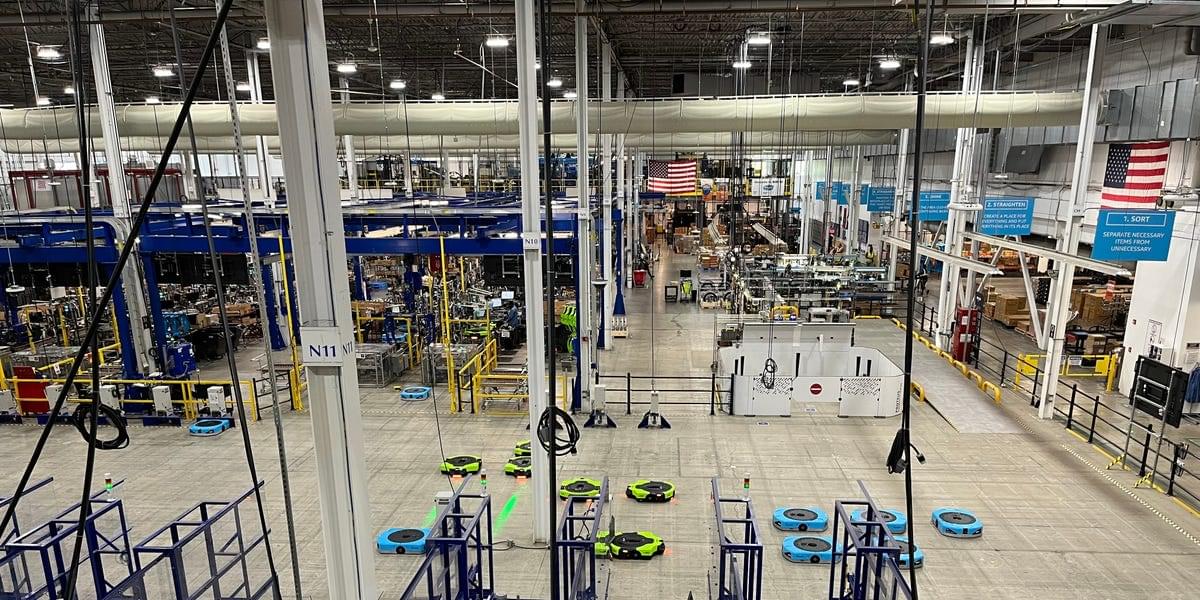The massive facilities where Amazon builds its robots provide a look at what modern manufacturing is actually like.
“Japan Traps the Impossible”: Scientists Develop Breakthrough Method to Extract Ammonia From Air and Water With Unmatched Precision
Posted in solar power, sustainability | Leave a Comment on “Japan Traps the Impossible”: Scientists Develop Breakthrough Method to Extract Ammonia From Air and Water With Unmatched Precision
IN A NUTSHELL 🌱 Researchers at the University of Tokyo developed a method to produce ammonia using artificial photosynthesis. 🔬 The process mimics natural nitrogen fixation by cyanobacteria, utilizing atmospheric nitrogen, water, and sunlight. ⚙️ This method uses a combination of iridium and molybdenum catalysts to enhance reaction efficiency. 🌍 The innovation promises to reduce
“Successful EV manufacturer”… now that’s not something you’d expect to hear all that often. A company that’s into cars might still have a chance, but you’d rarely hear about a two-wheel EV-maker producing numbers in the green. Enter Stark Future.
Tech News : Dubai residents will soon enjoy free access to ChatGPT Plus, a premium AI chatbot, thanks to a partnership between OpenAI and the UAE government. This
Back in 2018, a scientist from the University of Texas at Austin proposed a protocol to generate randomness in a way that could be certified as truly unpredictable. That scientist, Scott Aaronson, now sees that idea become a working reality. “When I first proposed my certified randomness protocol in 2018, I had no idea how long I’d need to wait to see an experimental demonstration of it,” said Aaronson, who now directs a quantum center at a major university.
The experiment was carried out on a cutting-edge 56-qubit quantum computer, accessed remotely over the internet. The machine belongs to a company that recently made a significant upgrade to its system. The research team included experts from a large bank’s tech lab, national research centers, and universities.
To generate certified randomness, the team used a method called random circuit sampling, or RCS. The idea is to feed the quantum computer a series of tough problems, known as challenge circuits. The computer must solve them by choosing among many possible outcomes in a way that’s impossible to predict. Then, classical supercomputers step in to confirm whether the answers are genuinely random or not.
Physicists demonstrate a time mirror for the first time, reversing electromagnetic waves in a laboratory led by Dr. Hussein Moussa.
The idea of a multiverse of universes is derived from a particular interpretation of quantum mechanics, but now a new twist on a classic experiment says it is time to put the idea to bed
Medication mistakes — in which the wrong drug or the wrong dose is given to a patient — are among the most common errors in medicine.
Agentic architecture is the foundation of the current evolution of AI. It’s an AI system development approach that emphasizes autonomy, self-direction and self-improvement. This architecture supports multi-agent collaboration, integration with key enterprise systems and self-learning ecosystems. Instead of being programmed for specific tasks, AI agents in an agentic architecture continually evolve, shifting from task-based automation to proactive, AI-driven decision making.
Why Business And Technology Leaders Should Care
The shift to agentic AI represents a strategic transition from viewing AI as a tool to recognizing it as a strategic partner. This fundamentally alters how companies function and will redefine the roles of business and technology leaders and their interactions with AI moving forward.









